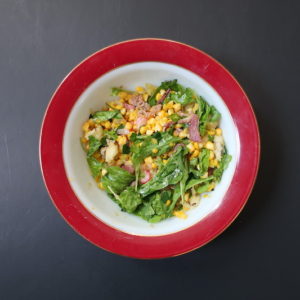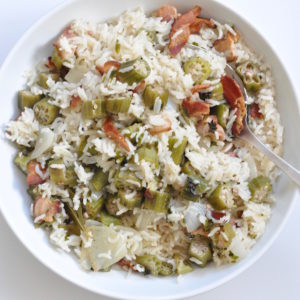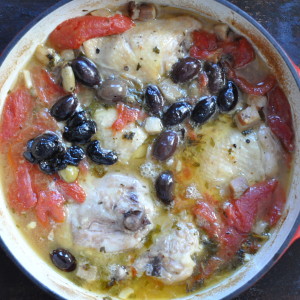Bacon
If one considers a bagel with lox and cream cheese breakfast nirvana, it’s hard to understand the fuss over bacon.The current trend of pairing bacon with foods commonly considered dessert, like ice cream or chocolate bars, doesn’t help matters. In fact, some of us find it nauseating.
When one considers bacon in beef daube, or simmered in squash soup, or stuffed into a BLT with lots of mayonnaise, comprehension begins to dawn.
All kidding aside, I didn’t really start using bacon until my thirties, when I got heavy into Southwestern French cooking, which calls for pork in practically everything. John, who is quite fond of bacon, found my conversion pleasing. He was even happier when I began curing bacon myself, here a process requiring neither a smoker nor scary salts.
This recipe is adapted from Eugenia Bone’s Well-Preserved. She notes you can alter the spice mixture to suit your taste, as I have here. Do not tamper with the salt, which is doing the work of preserving. You can play with the sugar, which offsets the salt’s bitterness. Swap it for brown sugar, or, if you are an extremely fortunate person, replace it with maple syrup.
Please note my instructions assume your pork belly has a rind; my market sells pork belly both with the rind and without, and this belly was rindless.
Bacon, adapted from Eugenia Bone’s Well-Preserved
2 1/2 pounds boneless pork belly
3 tablespoons pickling or curing salt (available online, at some markets, most hardware stores, anywhere canning supplies are sold,)
1 tablespoon white sugar
1 tablespoon black peppercorns
2 bay leaves
1 teaspoon fennel seed
1 teaspoon caraway seed
1 teaspoon dried rosemary
1 teaspoon dried thyme
1 teaspoon paprika
2 garlic cloves
10 juniper berries

Wash and dry the pork carefully and lay in a clean roasting pan.
Using either a spice grinder or mortar and pestle, grind everything but the sugar together until it’s crushed. You need not go crazy and make a fine powder unless you’re looking to get some aggression out.

Otherwise, once the ingredients have found one another, tip everything, along with your sugar, into a Ziploc or other sealable freezer bag that will accommodate the belly. It’s advisable to do this over your sink. Do notice how good everything smells.
Now comes your inner child moment. Slip the belly into the bag and rub the spices mix all over, being sure to get any nooks and crannies.
A variation: You might find it easier to do this step in the roasting pan. I have small hands, and find it’s less mess in the bag, but go with whatever you find best. Either way, in the end, you want your pork belly to have a spice rub. Slide it into the bag, push the air out, and seal it.

Now refrigerate it for 7 days. It’s a good idea to leave yourself a note someplace–on your cell phone, the fridge, wherever–so you don’t forget when the 7 days are up.
You may find some liquid forming around the meat during the curing period.That’s normal.

When the 7 days are up, take the meat out of the bag. Wash and dry it carefully. You don’t need to get every last bit of spice off.
Put the belly in a clean roasting pan, cover snugly with foil, and refrigerate 24 hours. During this time, the salt will clear.

The next day, preheat your oven to 200 degrees F. Bake your bacon for 1 1/2 to 2 hours, until it registers 150 degrees on a thermometer. Don’t overcook it, or all your patience will be rewarded with dry bacon.
When the bacon is cool enough, cut off the rind, if there is one. Cut into pieces and frozen, pork rind adds flavor to soups, stews, and sauces. Carefully dab the fat off the bacon, slice as you wish, wrap well, and refrigerate up to 2 weeks. I like to refrigerate some and freeze the rest.

To eat: reheat in a cast-iron or non-stick frying pan, preferably not for dessert.





